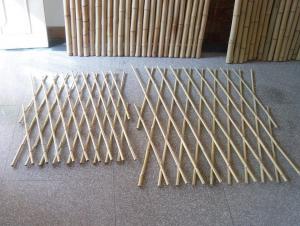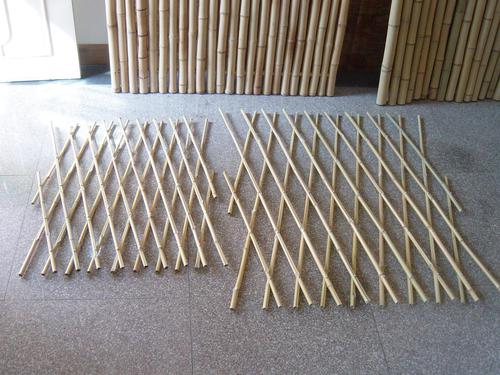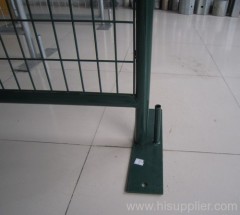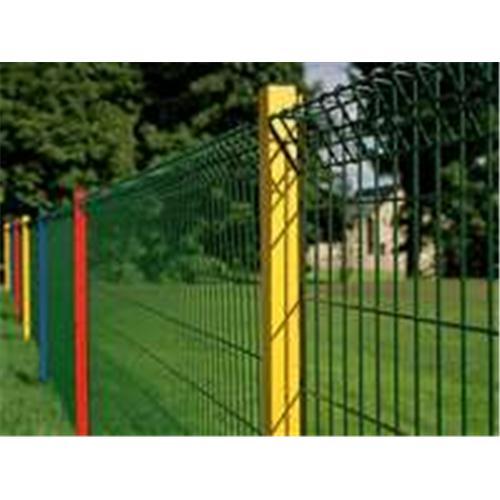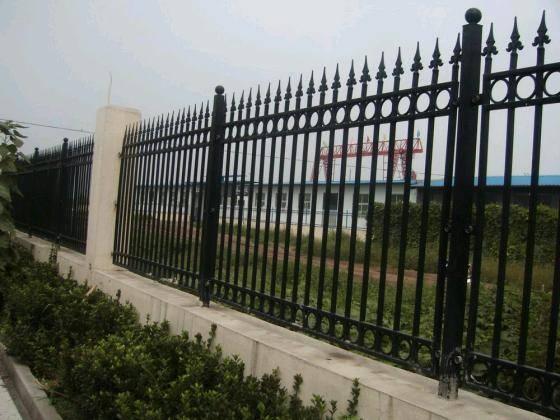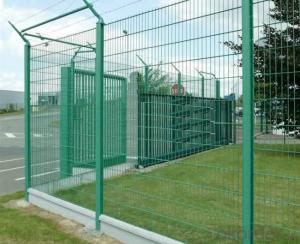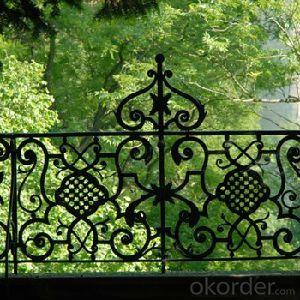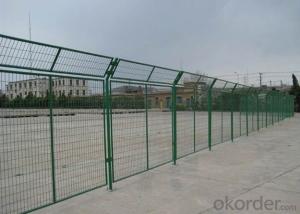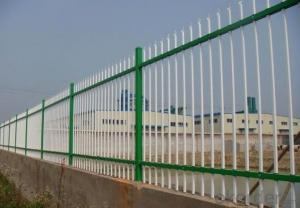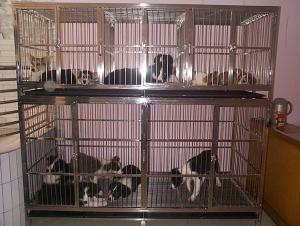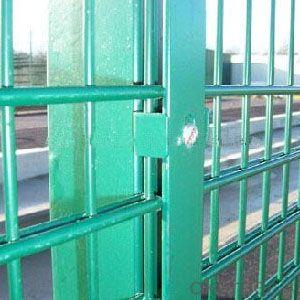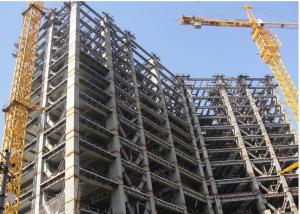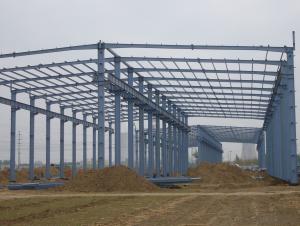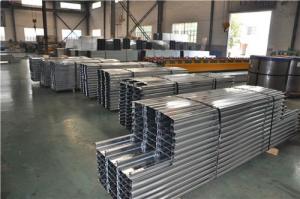Fence Materials-best price with high quality
- Loading Port:
- China Main Port
- Payment Terms:
- TT OR LC
- Min Order Qty:
- -
- Supply Capability:
- -
OKorder Service Pledge
OKorder Financial Service
You Might Also Like
Specifications
material:low carbon steel wire
surface finish: hot-dip/electro galvanized, powder coated
advantage:good oxidation resistance
Product name: pedestrian guardrail
Size: as your requirement
Process: 1>galvanizing before welding or made of galvanized steel tube and then welded
2>welding before galvanizing ( only feasible for guardrail with relatively small size)
Caricteristics: strong, durable and flexible construction
Application: used in protecting of public area, highways, airports, stations, open yards and so on
The biggest wire mesh fence factory in Anping which is the wire mesh base of China.
The company is established in 1986 and she has more than 20 years' exporting experience. We have exported to USA, Columbia, Japan, Russia, Poland, Singapore, Dammam, Dubai, Iraq ,Thailand, Burma, around 20 countries. Anping County Jinbiao Wire Mesh Fence Co., Ltd gained very good reputation all over the world.
2> Main products:
Wire mesh fence, Welded wire mesh, Sound barrier, Temporary fence, Chain link fence, Euro fence, Palisade fence, Hexagonal wire mesh, Gabion box, Barbed and Razor barbed wire
- Q: How are steel structures designed to resist wind forces?
- Steel structures are designed to resist wind forces through various methods. Firstly, the shape and configuration of the structure are carefully considered to minimize wind loads. Streamlined designs, such as curved surfaces or tapered forms, help reduce wind resistance. Additionally, steel structures are designed with adequate stiffness and strength to withstand wind loads. This is achieved by using high-strength steel materials and optimizing the structural elements' sizes and connections. Engineers also consider the dynamic behavior of the structure under wind-induced vibrations and ensure that it remains stable and safe. Furthermore, steel structures may incorporate features like bracing systems, diaphragms, and dampers to enhance their ability to resist wind forces. These elements help distribute the wind loads efficiently and dissipate energy, minimizing the impact of wind on the structure. Overall, the design of steel structures for wind resistance involves a combination of aerodynamic principles, structural analysis, and appropriate measures to ensure stability, strength, and safety against wind forces.
- Q: How much is steel per square meter of steel foundation?
- All types of foundations are not exactly the same. It is recommended that you calculate the total amount of reinforcement, and then divide the area to get the square meter content. This is more accurate.
- Q: How are steel structures designed for resisting earthquake-induced ground settlements?
- To resist ground settlements caused by earthquakes, steel structures are engineered with specific design considerations and techniques. The main objective is to guarantee the structure's ability to withstand the potentially destructive effects of ground settlements during seismic events. Flexibility is a key factor in the design process. By allowing the steel structure to flex and deform in response to seismic forces, it can effectively absorb and distribute the energy produced by ground settlements. This is accomplished by using ductile materials and carefully calculating the connections between steel members. Furthermore, the structural design incorporates seismic-resistant systems, such as base isolation or energy dissipation devices. Base isolation involves placing the structure on flexible bearings or isolators, which separates it from the ground and minimizes the transmission of ground settlements to the building. Energy dissipation devices, such as dampers or braces, are also installed to absorb and dissipate seismic energy, further lessening the impact of ground settlements. In addition, steel structures are designed with redundancy and robustness in mind. Multiple load paths and redundant elements ensure that even if one part of the structure is affected by ground settlements, the overall stability of the building remains intact. This allows the structure to endure localized settlements without compromising its overall integrity. Advanced computational models and simulation techniques play a crucial role in the design process. These models take into account factors such as anticipated ground motion, soil properties, and the specific characteristics of the steel members and connections. By analyzing the structure's response to various ground settlement scenarios, engineers can optimize the design to enhance its seismic performance. Overall, the design of steel structures to resist earthquake-induced ground settlements involves a combination of flexibility, seismic-resistant systems, redundancy, and robustness. These design considerations, along with the utilization of advanced analysis techniques, ensure that the structure is capable of withstanding the dynamic forces generated by ground movements during an earthquake.
- Q: How are steel structures used in warehouses and storage facilities?
- Warehouses and storage facilities commonly utilize steel structures because of their strength, durability, and cost-effectiveness. These structures create a strong framework that can support heavy loads, allowing for efficient storage and organization of goods. In warehouses, steel structures are employed to construct large open spaces that can accommodate various storage systems, such as pallet racks, mezzanines, and shelving units. The high strength-to-weight ratio of steel enables the construction of tall, spacious buildings without the need for excessive support columns, maximizing storage space. Steel structures also offer flexibility in terms of layout and design. They can be easily modified or expanded to adapt to changing storage needs. The use of steel allows for wide-span structures, resulting in fewer interior columns and more open floor space. This facilitates efficient movement of goods and equipment within the facility, reducing material handling time. Furthermore, steel structures provide enhanced fire resistance compared to other building materials. This is particularly important in warehouses and storage facilities where the risk of fires is higher due to the presence of flammable materials. Steel is non-combustible and does not contribute to the spread of fire, ensuring the safety of stored goods and personnel. Additionally, steel structures are resistant to pests, such as termites and rodents, which can cause damage to the building and stored items. Steel does not rot or warp, ensuring the long-term integrity of the structure. This reduces maintenance and repair costs, making steel structures a cost-effective choice for warehouses and storage facilities. To summarize, steel structures are widely used in warehouses and storage facilities due to their strength, durability, flexibility, and cost-effectiveness. They provide a solid framework for efficient storage, maximize available space, offer fire resistance, and require minimal maintenance. These advantages make steel structures the optimal choice for businesses seeking to optimize their storage capabilities.
- Q: What are the environmental impacts of using steel in construction?
- The environmental impacts of using steel in construction are primarily related to its production process. Steel production requires large amounts of energy, contributing to greenhouse gas emissions and air pollution. Additionally, the extraction of iron ore and other raw materials for steel production can lead to habitat destruction and biodiversity loss. However, steel is highly durable and can be recycled, reducing the demand for new production and minimizing its environmental impact in the long run.
- Q: What are the considerations when designing steel structures for office buildings and corporate headquarters?
- When designing steel structures for office buildings and corporate headquarters, several considerations must be taken into account. First and foremost, the structural integrity and safety of the building are paramount. Steel structures must be designed to withstand the expected loads, including dead loads (weight of the building itself) and live loads (occupant and furniture loads). Additionally, the architectural and aesthetic aspects of the building should be considered. Steel allows for flexibility in design, enabling architects to create unique and visually appealing structures. The design should also consider the desired floor layout and spacing requirements for office spaces, meeting rooms, and common areas. Another important consideration is the sustainability and energy efficiency of the structure. Steel is a highly recyclable material, making it an environmentally friendly choice. The design should incorporate energy-efficient features such as proper insulation, natural lighting, and efficient HVAC systems. Moreover, the building's functionality and adaptability should be addressed. Office buildings and corporate headquarters often require flexible spaces that can accommodate changing needs and future expansions. The steel structure should allow for easy reconfiguration and expansion without compromising its integrity. Lastly, cost-effectiveness is a crucial consideration. Steel structures offer numerous cost benefits, including shorter construction times, reduced maintenance costs, and a longer lifespan compared to other building materials. The design should optimize the use of steel while considering the project's budget and overall financial feasibility. In conclusion, when designing steel structures for office buildings and corporate headquarters, considerations should encompass structural integrity, architectural design, sustainability, functionality, and cost-effectiveness. By addressing these factors, a well-designed steel structure can provide a safe, visually appealing, and efficient workspace for employees and businesses.
- Q: What are the guidelines for the construction and erection of steel structures in urban areas?
- The guidelines for the construction and erection of steel structures in urban areas can vary depending on the specific jurisdiction and building codes in place. However, some common guidelines include obtaining necessary permits and approvals, adhering to height and setback restrictions, ensuring structural stability and integrity, implementing appropriate fire safety measures, and minimizing disruptions to neighboring properties and the surrounding environment. It is essential to consult local authorities and professionals experienced in steel construction to ensure compliance with all applicable guidelines and regulations.
- Q: What are the types of steel structures?
- The structure includes television tower, microwave tower, communication tower, high-voltage transmission line tower, petrochemical tower, atmospheric monitoring tower, launch tower, tower, tower, drilling travel lookout tower, tower, exhaust chimney, and most are made of steel structure of high-rise structure. 336m Heilongjiang TV Tower is the highest Chinese steel structure of the multifunctional TV Tower, the same type of 200 ~ 300m tower, there are many. The large tower mast structure China built in twentieth Century 60, -70's 200m 210m Guangzhou TV Tower, Shanghai TV Tower, 194m tower, transmission line across the Yangtze River in Nanjing 325m Beijing environmental climate mast. Completed in 1990, 212m Shantou TV Tower, 260m, Daqing TV Tower, are also steel structure. Large quantity and wide high-rise structure is communication tower and tower, along with the information and power development, the 50m around the tower throughout china.
- Q: What are the environmental benefits of using steel structures?
- There are several environmental benefits of using steel structures. Firstly, steel is a highly sustainable material as it can be recycled indefinitely without losing its properties. This reduces the need for mining and the associated environmental impacts. Additionally, steel structures are durable and require minimal maintenance, leading to a longer lifespan and reduced waste. Steel is also lightweight, which means less energy is required for transportation and installation. Lastly, steel is fire-resistant, reducing the risk of fires and minimizing the release of harmful pollutants into the environment.
- Q: What are the common finishes and coatings applied to steel structures?
- To enhance the durability, aesthetics, and resistance to corrosion of steel structures, several finishes and coatings can be applied. These protective layers ensure the longevity and structural integrity of the steel. Commonly used finishes and coatings include: 1. Paint: Painting is a popular choice as it adds decorative appeal and acts as a barrier against environmental factors. It comes in various colors and finishes to cater to different design preferences. 2. Galvanizing: This process involves applying a zinc coating to steel structures, preventing corrosion by sacrificing itself. Galvanized steel is ideal for outdoor environments where corrosion resistance is crucial. 3. Powder Coating: Dry powder is applied to the steel structure and then cured in an oven, resulting in a durable and smooth finish. It offers excellent resistance to chipping, cracking, and fading, making it suitable for structures that require high durability. 4. Epoxy Coating: Known for exceptional adhesion and chemical resistance, epoxy coatings are commonly used in industrial settings with harsh chemicals or corrosive environments. They provide a protective layer that prevents corrosion and extends the lifespan of steel structures. 5. Anodizing: Though typically used on aluminum structures, anodizing can also be applied to steel. It creates an oxide layer that offers excellent corrosion resistance. Anodized steel structures have a sleek and modern appearance, often used in architectural applications. These examples demonstrate the various finishes and coatings available for steel structures. The choice depends on factors such as intended use, environmental conditions, and desired aesthetics. Consulting with a professional can determine the most suitable option for a specific steel structure.
Send your message to us
Fence Materials-best price with high quality
- Loading Port:
- China Main Port
- Payment Terms:
- TT OR LC
- Min Order Qty:
- -
- Supply Capability:
- -
OKorder Service Pledge
OKorder Financial Service
Similar products
Hot products
Hot Searches
Related keywords
